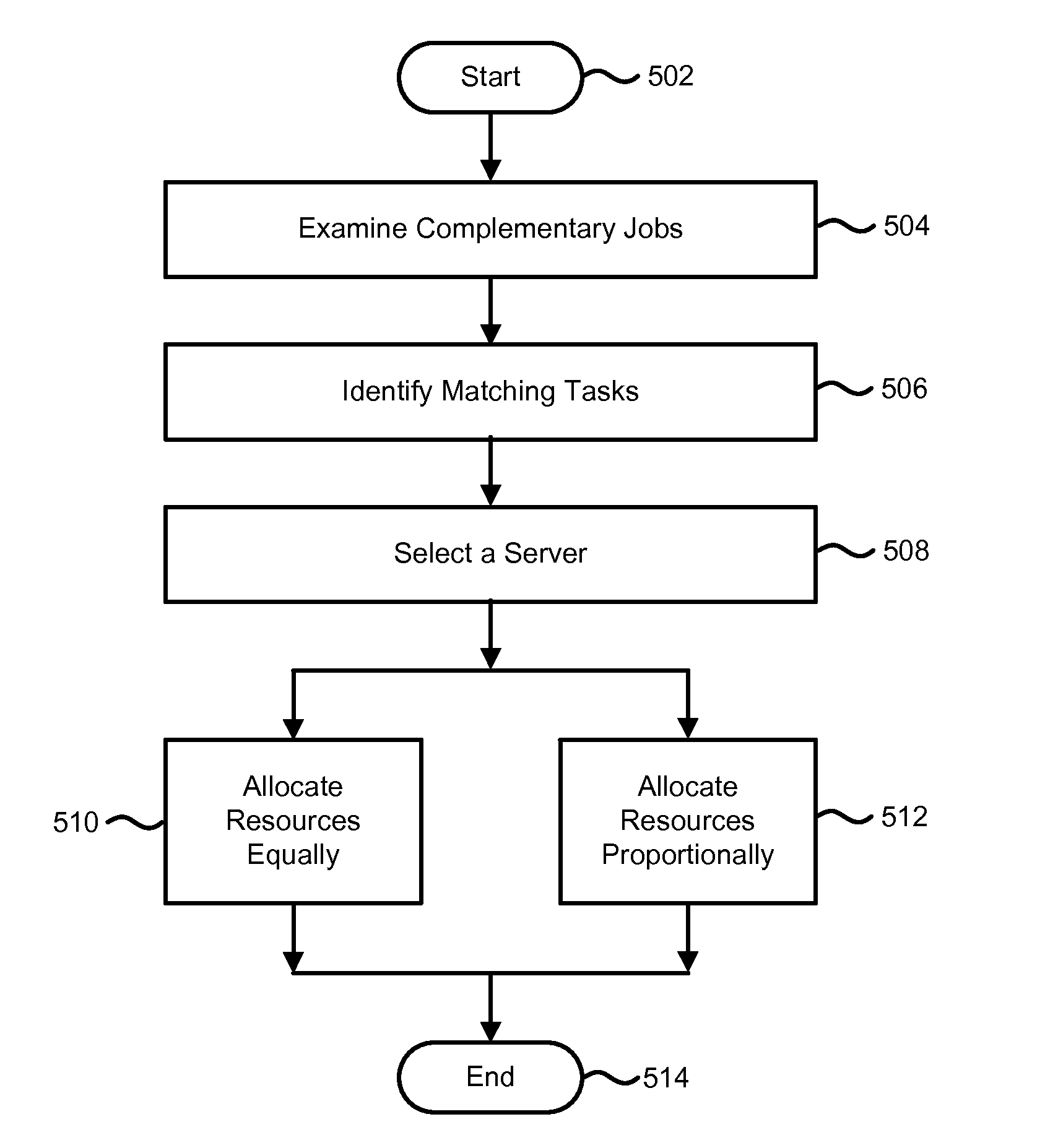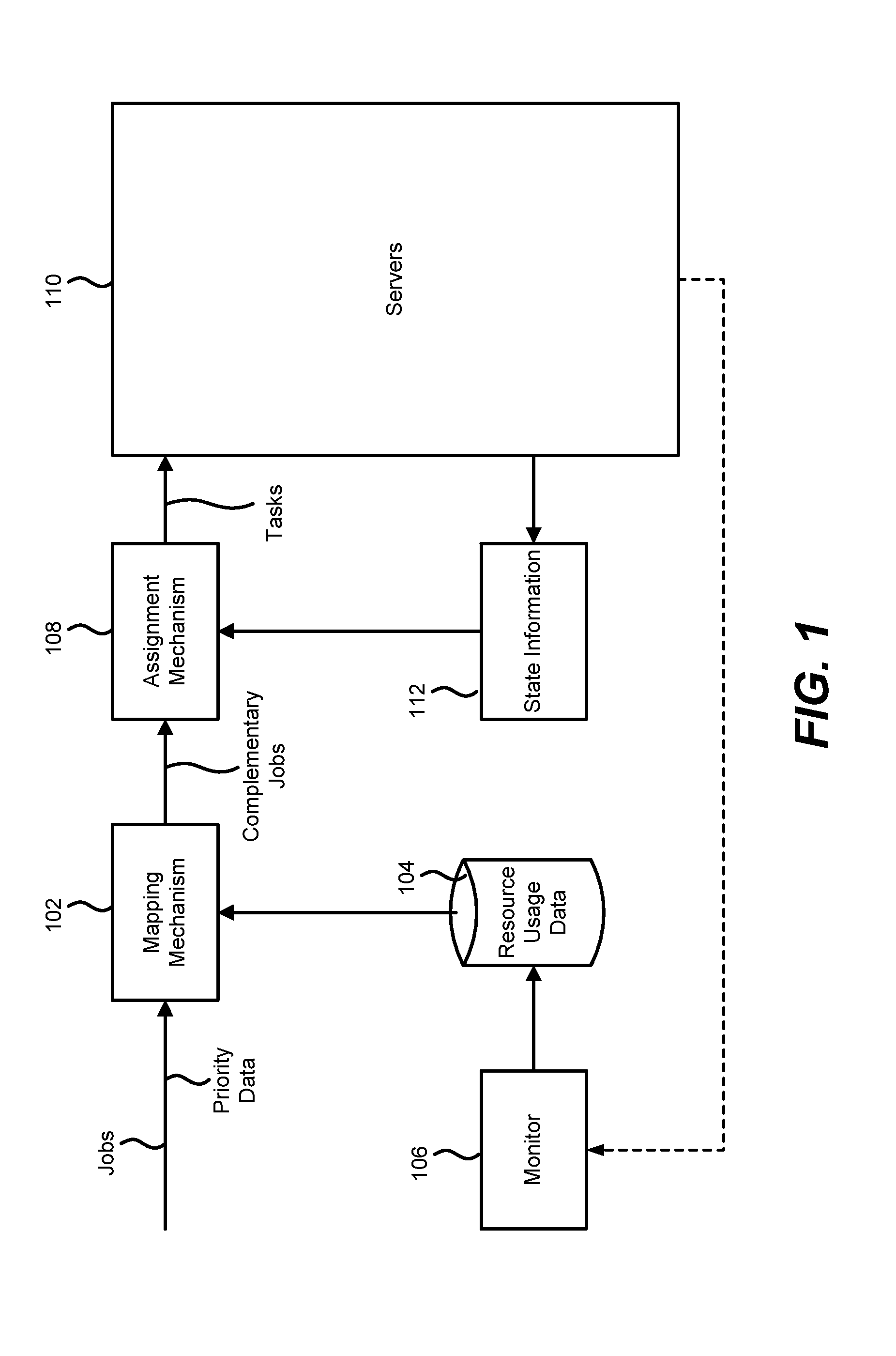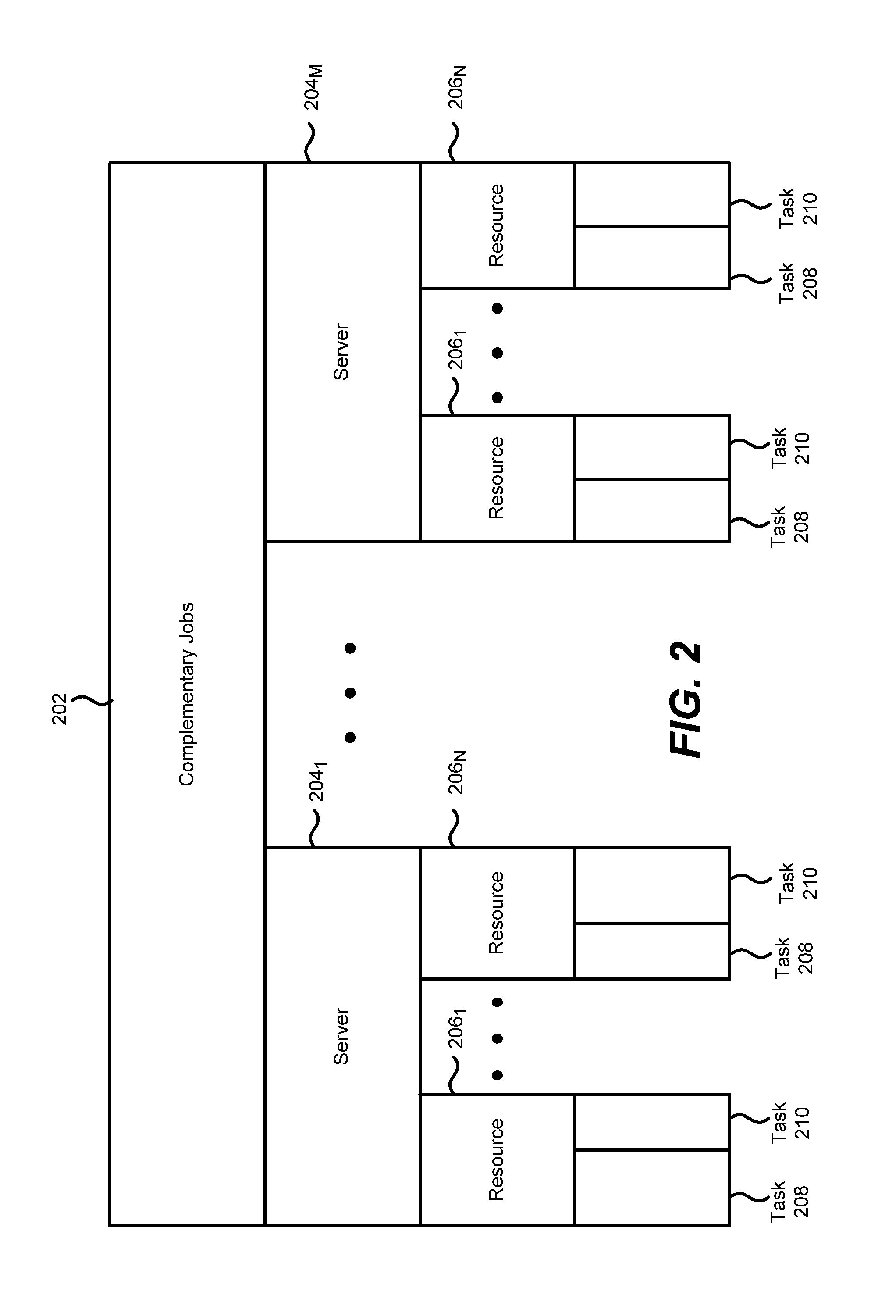Scheduling Execution of Complementary Jobs Based on Resource Usage
a technology of resource utilization and scheduling execution, applied in the direction of multi-programming arrangements, instruments, program control, etc., can solve the problems of high operating cost, unfavorable workload throughput, and unnecessary capital expenditures due to additional servers, so as to improve processing time and reduce processing time
- Summary
- Abstract
- Description
- Claims
- Application Information
AI Technical Summary
Benefits of technology
Problems solved by technology
Method used
Image
Examples
Embodiment Construction
[0018]Various aspects of the technology described herein are generally directed towards assigning complementary jobs to servers based on resource usage data. As described herein, a scheduling mechanism identifies the complementary jobs amongst a plurality of jobs and partitions resources at a group of servers in an efficient manner to execute the complementary jobs. A job refers to a data processing program that includes at least one processing phase that can be parallelized.
[0019]Each of the group of servers has programmatic control over these resources. In addition, the group of servers form a portion of a cluster (i.e., a server cluster or a data center) comprising a plurality of servers being managed as one unit. The group of servers includes physical computers. Alternatively or in addition, the group of servers may include virtual machines that run on the physical computers.
[0020]According to one exemplary implementation, the complementary jobs include one more jobs that overlo...
PUM
 Login to View More
Login to View More Abstract
Description
Claims
Application Information
 Login to View More
Login to View More - R&D
- Intellectual Property
- Life Sciences
- Materials
- Tech Scout
- Unparalleled Data Quality
- Higher Quality Content
- 60% Fewer Hallucinations
Browse by: Latest US Patents, China's latest patents, Technical Efficacy Thesaurus, Application Domain, Technology Topic, Popular Technical Reports.
© 2025 PatSnap. All rights reserved.Legal|Privacy policy|Modern Slavery Act Transparency Statement|Sitemap|About US| Contact US: help@patsnap.com



